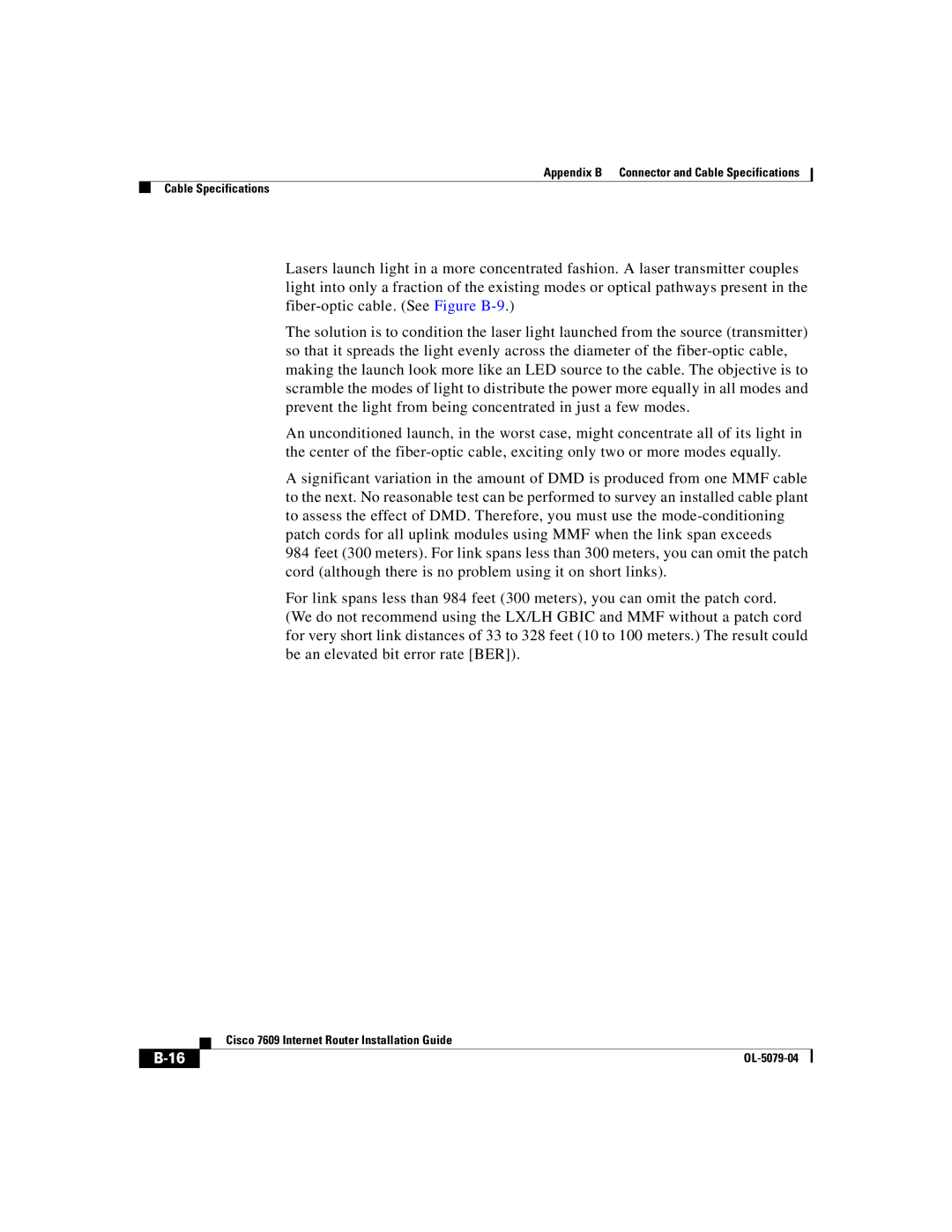
Appendix B Connector and Cable Specifications
Cable Specifications
Lasers launch light in a more concentrated fashion. A laser transmitter couples light into only a fraction of the existing modes or optical pathways present in the
The solution is to condition the laser light launched from the source (transmitter) so that it spreads the light evenly across the diameter of the
An unconditioned launch, in the worst case, might concentrate all of its light in the center of the
A significant variation in the amount of DMD is produced from one MMF cable to the next. No reasonable test can be performed to survey an installed cable plant to assess the effect of DMD. Therefore, you must use the
984feet (300 meters). For link spans less than 300 meters, you can omit the patch cord (although there is no problem using it on short links).
For link spans less than 984 feet (300 meters), you can omit the patch cord. (We do not recommend using the LX/LH GBIC and MMF without a patch cord for very short link distances of 33 to 328 feet (10 to 100 meters.) The result could be an elevated bit error rate [BER]).
| Cisco 7609 Internet Router Installation Guide |
|
